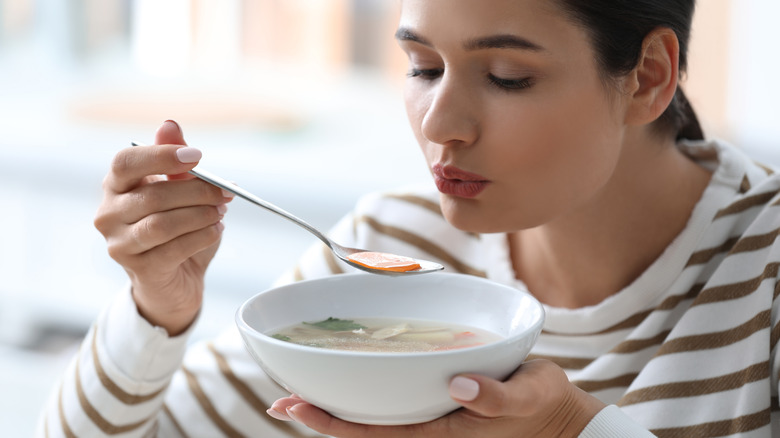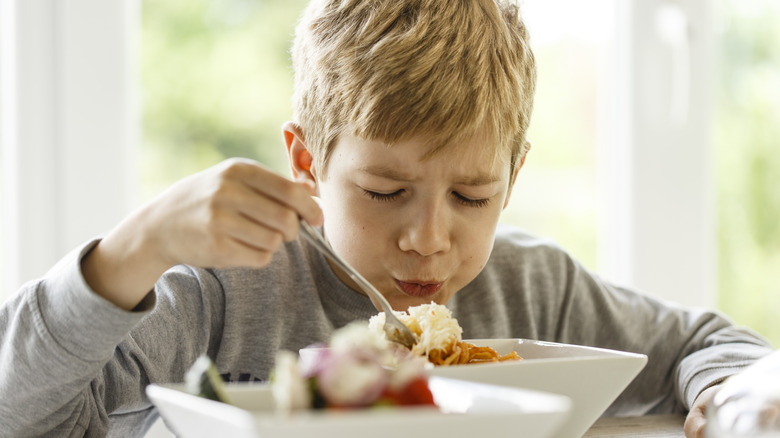Blowing On Your Food Does More Than Cool It Down
We've all eaten food that may be too hot to eat, and we know just how painful it can be. Usually, this happens with those cool autumn evening dinners after a long day outside, like your favorite chili containing warm, hearty ingredients. Kidney beans, cheese and crackers, ground beef, macaroni noodles — you name it.
As you go to take a bite of this delicious meal, you may burn the lid of your mouth, causing you to suddenly take the spoon out of your mouth and blow on it to cool it off. But does this technique work? Yes, and believe it or not, you can also blow on cold foods to warm them up. This is because our breath remains at our body temperature, usually around 98.6 degrees Fahrenheit. Due to this constant temperature, our breath can act as a modulator, bringing all food to a bearable condition to eat if we blow on it long enough.
How your breath affects the temperature
To better understand how your breath cools or heats your food, it's important to address thermal energy. Throughout the universe, atoms and molecules are constantly moving, even ones in solid objects, albeit in a very slow manner. The more these particles move, the more kinetic energy they generate, and that energy presents itself in the form of heat or thermal energy. Eventually, the atoms get so excited that they break away from their combined form and turn a solid substance into liquid or dissipate into a gas.
Molecules can transfer this thermal energy to other molecules via conduction. Conduction occurs when fast-vibrating atoms come into contact with other atoms, transferring their kinetic energy to other particles, creating a more equal heat distribution. When you put your warm chili in your bowl, the heat transfers from your chili to your ceramic bowl, causing the molecules in the bowl to heat up.
When you blow on your food, the relatively colder air from your breath slides underneath the rising warm air, causing more heat from your chili to transfer to the new air being introduced, creating a cyclical effect that cools your meal, otherwise known as convection. If you blow air on a colder substance, then the heat from your breath will transfer to it, causing it to warm up.
The evaporative cooling process
When you blow on your food, specifically liquids, there is another process at play called evaporative cooling. Normally, water molecules inside your food get so hot that they begin to evaporate and leave your soup, bringing the heat with them. Since some of the heat escapes, your bowl of tomato soup gets cooler, for example. However, eventually, this process results in a vapor cloud surrounding your food, which prohibits other water molecules from evaporating, leaving them at a relatively stable temperature.
Blowing on your food not only pushes colder air into spaces where the warm air used to be, but it also moves this vapor cloud and allows for more water molecules to evaporate, thus creating a cycle that leads to your food being cooler. Now with this knowledge at hand, you can master the art of getting your meal to just the right temperature, and you'll be able to teach your family and friends some science while you're at it.



